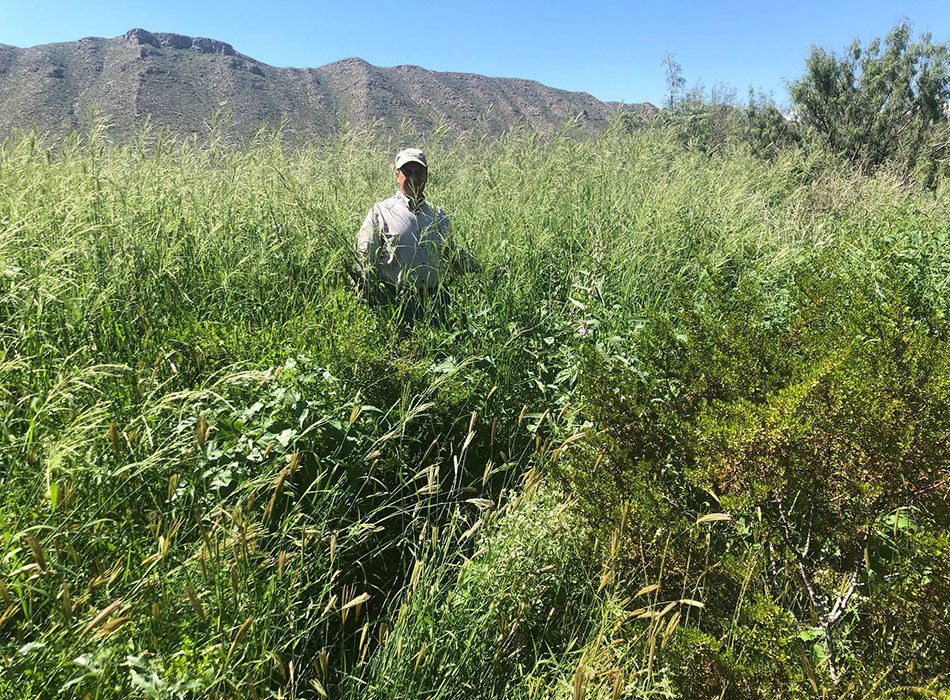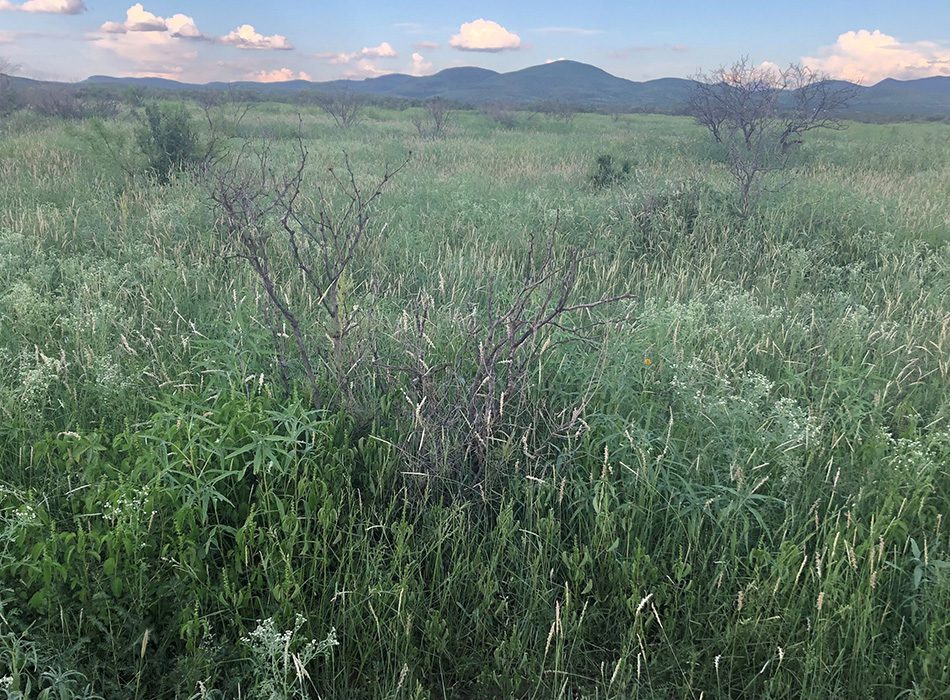Collinsville workshop with Mexican rancher regenerating desert land
2015
2021
Chihuahuan Desert rancher Alejandro Carrillo has worked for 15 years to dramatically improve the soil and pasture on his 12,000ha property.
Now he’s starting on the climate.
NQ Dry Tropics’ Landholders Driving Change project will host Alejandro at a two-day Collinsville workshop on 23-24 August where he will discuss regenerative grazing principles based on his experience in the desert.
A convert to holistic management, Alejandro combined three small herds running on his property and began to regularly move the larger mob to fresh pastures.
Now, he moves them twice on most days, and at least every day.
It’s an arid climate — 250mm rainfall concentrated in a three-month wet season — and, in the beginning, precious little grass with which to work.
“When we started, we had three species of perennial grass,” Alejandro said.
“At last count, based on the bird conservancy organisations we work with, the number was more than 60, and still counting.”
The success achieved by Alejandro and his team of three on Las Damas Ranch is even affecting the local climate.
For the past five years, they have received between 10 and 20 per cent more rain than their neighbours.
Las Damas (The Ladies) was named because of the proliferation of silver, lead and zinc mines previously there, all of them named after female saints.
Alejandro said the proliferation of diverse pasture species across Las Damas was entirely thanks to nature.
“We did not seed anything. The [seed bank] was already there, we just had to create the right conditions and respect the natural succession of plants, from bare ground, to weeds, to grasses, to flowering forbs.”
When he started, the property ran 200 head at most, all supplemented during the dry season with hay imported at considerable expense.
Now, there are three to four times as many cows intermingled with a herd of burros (donkeys) and the only dietary input required is a bit of seasalt.
Alejandro said he tried to have enough burros to make up about 10 per cent of the mixed herd. They provided some protection against predation from the coyotes, mountain lions and bears, but more importantly, ate the unpalatable and tougher plants left behind by the cattle.
They also run sheep and goats in a separate herd.
The cattle and burros are up to two moves on most days, which means his pastures rest for 10 to 14 months between half-day or one-day grazes.
The biggest problem he has now is not enough mouths to eat the grass he is growing.
“We only sell the steers,” Alejandro said.
“We’re keeping 80 to 90 per cent of the heifers to grow the herd.”
The challenge that creates is about providing water.
Alejandro said water distribution on the property was good, but constrained by the flow rate delivered by a 50mm pipe reliant on gravity alone.
There is a mountain range and plenty of hills on the ranch, so the tanks have been placed on higher ground and the watering points are gravity-fed.
As he grows the herd to an arbitrary target of 1400-1500 head, he has a simultaneous project to replace the 50mm main with a 75mm main.
However, as with every plan he has for the enterprise, it is flexible.
“If we need to pressurise the main, the new pipe will be able to cope with that,” Alejandro said.
Flexibility is a by-word across the operation.
“We have a plan but when we move the cows, for instance, we get feedback from them and we decide then which way to go and where to go,” he said.
Alejandro is a fourth-generation rancher in Mexico, but it hasn’t been all plain sailing for the Carrillo family.
His grandfather Rodrigo Carrillo was a rancher, father Raul grew up on the family property and Alejandro well remembers as a young boy riding after cattle on his grandfather’s property.
Life doesn’t always go to plan and Rodrigo was forced to sell.
Raul carved out a career in banking before purchasing the first piece of the Las Damas Ranch in 1982.
Alejandro studied IT and for almost two decades worked in America and Mexico in a variety of roles designing, developing, writing and selling software to the finance sector.
The effect of those bumps in the family’s ranching history has been to strengthen their capability and resolve.
Alejandro answered his father’s call to come back to the land and assumed control of Las Damas in 2004 by then 30,000 acres with 25,000 acres suitable for grazing.
Almost immediately he could see the traditional ranching methods were no longer sustainable and he started scanning the horizons for alternatives.
Not far away he found holistic management proponents getting good results.
They became mentors and Alejandro stepped onto the regenerative highway with initial education courtesy of Jesus Almeida, Elco Blanco and Octavio Bermnudez.
Interestingly, those “family history bumps” helped smooth any possible friction from his father who could see sweeping changes across the operation of the ranch.
“As a banker, he wanted to know who was guiding me — ‘a very good, hardworking, reliable family,’ my Dad, the banker said — and what the figures showed,” Alejandro said.
“He didn’t have to know all the details of the process to be comfortable with it.”
Very early on, Alejandro asked Jesus how he would benefit from adopting an holistic management approach on the ranch.
“He told me that whatever happened, just by doing it, I would add years to my father’s life,” Alejandro said.
“My father is now 90 years old and on Las Damas, he is still like a kid with a new toy.”
As a bonus they also have turned Las Damas into one of the world’s best examples of regenerative grazing improving soil health, biodiversity, enterprise resilience and profitability in a “desert” … affecting even the climate to make it more productive.
This is part of the Landholders Driving Change project, funded through the partnership between the Australian Government’s Reef Trust and the Great Barrier Reef Foundation.
The grass grows tall and lush in the paddocks of Las Damas, even though it’s in a desert.
With appropriate grazing and plenty of rest, invasive species are eventually out-competed by desirable pasture grasses. This mesquite is being choked out by healthy pasture.


